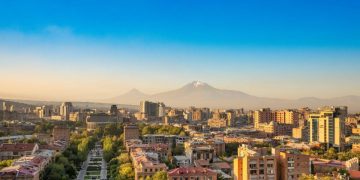THE length of a day on Earth will eventually stretch to 25 hours, but scientists say this should come as no surprise.
While it may take millions of years before another hour is tacked on, Earth's days have been lengthening for years.

The length of a day on Earth will eventually increase to 25 hours, but scientists say they have been growing longer for centuries.[/caption]
In fact, they are getting longer by roughly 1.8 milliseconds per century, according to EarthDate, a public radio program created by The University of Texas at Austin.
This is a one-minute increase every 3.3 million years, meaning it could take 200 million years before another hour is added to the day.
It seems the moon is to blame, as friction produced by tides has been slowing Earth's rotation over time.
As the Earth spins on its axis, this determines the amount of sunlight crossing its face and, in turn, the length of days.
But the moon's gravity tugs at the side of Earth that is closest to it, creating tides and causing the planet to bulge.
Since Earth spins faster than the moon orbits it, the so-called “tidal bulge” travels ahead of the moon's relative position.
This lump tugs the moon forward, causing friction along the seafloor that hinders the planet's rotation.
SLOW DOWN!
Scientists say slowing days have actually been observed for centuries.
“The change in Earth's spin rate is happening gradually enough that evolutionary processes can adapt to the changes over time,” Konstantin Batygin, a professor of planetary science at Caltech, told Live Science.
In fact, the length of days has been varying for years, and one billion years ago, a day was only about 19 hours long.
“The relative change in orbital speed would not be noticeable in daily life,” Batygin explained.
By the point days are expected to be 25 hours long, there would be 350 days in a year rather than 365 days.
The length of a year is determined by the number of Earth rotations that occur during one solar orbit.
As the planet circumnavigates the Sun in a nearly circular path, it spins on its own axis 365.25 times per sidereal year.

So-called “tidal bulges” are slowing the Earth's spin, as well as factors like the melting of the polar ice caps and subsequent rising sea levels.[/caption]
This term denotes when the Sun and Earth return to the same place in space with respect to the stars.
The extra quarter rotation each year explains the quadrennial leap year, which keeps us in sync with the Sun.
Despite the longer days, Earth has been spinning faster than ever since March 2011, when a magnitude 8.9 earthquake rippled through Japan.
The seismic event accelerated Earth's rotation and shortened the length of the day by 1.8 microseconds.
A Timeline of Life on Earth
































